Austin Daye, Gonzaga – Daye measured out very well at 6′11 in shoes with a 7′3 wingspan, but at 192 pounds he might get blown away by a stiff breeze. He also excelled in the workouts, showing a strong fundamental basis and a sure stroke from everywhere on the court. There are still concerns about his relative strength, but according to Chad Ford, a couple of lottery teams were willing to give him another look after his workouts. Probably leaning draft after this camp.
Taj Gibson, USC – Also measured well, standing 6′10 in shoes with an absurd 7′4 wingspan. Given that Gibson will be 24 on draft day and he’s on the fence of the first round, he’s probably not returning to school.
Luke Harangody, Notre Dame – ‘Gody did not measure well, standing only 6′8 in shoes, a full inch-and-a-half shorter than his counterpart Tyler Hansbrough. According to this report, though, he may have the best jumpshot in the entire draft class. Still, he’s painfully unathletic and it would be a surprise to see Harangody stay in the draft.
Jrue Holiday, UCLA – Another winner in the measurement department, as Holiday showed he’s a big point guard (6′4 in shoes) with a long wingspan. He was also extremely impressive in workouts, with one scout saying, “that’s the kid we fell in love with in high school.” Given the exceptional workouts he was having in Chicago, Holiday was getting more buzz than any other guard there and is unlikely to return to Westwood.
Damion James, Texas – James must not have impressed much because most reports failed to mention him. Given that he’s a projected second-round pick at this point and he told Andy Katz that he’s looking for a guarantee, he would probably do himself well to return to school another year.
Gani Lawal, Georgia Tech – Lawal showed explosiveness and good size for a PF prospect, but according to Andy Katz, he may not be willing to take the chance unless he can secure a first round guarantee. Not sure he’s going to get that, which would mean probably a better than even chance that Lawal would join Derrick Favors and Iman Shumpert back in the ATL next season.
Jodie Meeks, Kentucky – Meeks is another player looking for a first round guarantee, and he’s unlikely to get it. He looked like he’s in tremendous shape and he shot the ball well in the camp, but there are still visible holes in his game (most notably, defense). This Wildcat is probably heading back to Lexington to play off-the-ball with John Wall in 2009-10.
Patrick Mills, St. Mary’s – Mills impressed scouts with his speed and shooting mechanics, but his size makes him a borderline first rounder. He said that if he is going to be a second round pick, he’ll return to St. Mary’s for his junior season. It says here that we don’t think that’ll be a problem.
Tyler Smith, Tennessee – Measured in at only 6′6 in shoes, so what position is he at the next level? Shot the ball well in drills, but remains on the fence depending on whether he’ll be a first or second round pick. Sound familiar?
Jeff Teague, Wake Forest – Gone. Says he’s leaving Wake Forest so long as he’s a first rounder, and he assuredly is one. Athletic point who had a longer wingspan and reach than expected, which helps to explain how a 6′1 guy can throw down such ridiculous dunks in transition.
Greivis Vasquez, Maryland – Vasquez measured well for a combo guard, and his quotes made it sound like this was just for show. He has little to no shot at the first round this year, and it appeared that he acknowledged as much. He should be back in College Park next season.
So of the twelve players still sitting on the fence, we’ve got the following staying in the draft: Brown, Daye, Gibson, Holiday, Mills and Teague. Really only Daye seems to be questionable at this point. The other six: Harangody, James, Lawal, Meeks, Smith and Vasquez are largely hoping for a first round guarantee that will not be forthcoming (Lawal excepted in this group).
Once the measurements including the athletic combine stats come out (vertical leap, speed, etc.), we’ll re-visit the 2009 Predraft Camp.
Ruh-Ro…
May 27th, 2009Tough day in Lexington. Not only did the former head coach turned Little Lord Fauntleroy (more on this later) sue his former employer for the entire value of his contract ($6M), but the Memphis Commercial-Appeal released a letter from the NCAA alleging two major violations at Memphis while under the dominion of current wundercoach, John Calipari.
One allegation involves providing free travel on the team plane for an associate of a player (valued at $2,260), but the much more serious allegation in our view is the one that accuses a Memphis player (presumably Derrick Rose) of pulling the old switcheroo with respect to his SAT examination. Put more directly, Rose is accused of having someone else take the test for him. The names are redacted, but see the relevant allegation from the NCAA letter below.
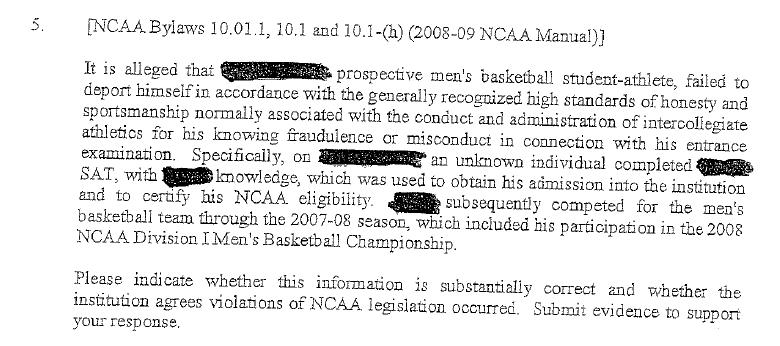
It goes without saying that academic fraud is something that catches the NCAA’s attention, especially when it involves a superstar player capable of nearly leading his team to a national title in his freshman season. The letter doesn’t present the NCAA’s evidence, but you can rest assured that they wouldn’t come at Memphis with these allegations if there wasn’t a considerable evidentiary basis for it. If Rose is in fact later deemed to have been ineligible during the 2007-08 season, Memphis’ record 38 victories and its F4 appearance could be vacated.
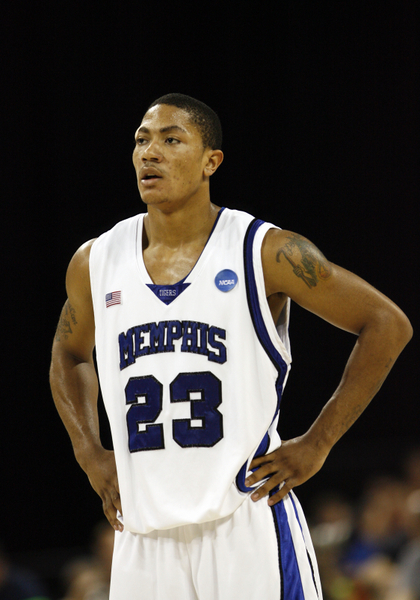
Calipari isn’t specifically named in the NCAA letter, but reports indicate that he has been called to Indianapolis to discuss these allegations on June 6th. What’s striking is that this isn’t the first time that a Calipari player has had his entrance exam score called into question. Doneal Mack was a former Florida recruit whom the school refused to admit based on his ACT score rising “too sharply from one test to the next.” Of course, Calipari welcomed him to Memphis with open arms, and Mack has been a productive bench player in his three seasons with the Tigers.
And of course Kentucky fans are all too familiar with Eric Manuel’s sad tale of academic fraud from the late 80s which ultimately led to some of the darkest days in the program’s history. You have to wonder if the school’s frustration with Tubby and then Gillispie has opened the door to another era of the ‘anything goes’ mentality in Lexington. After all, it’s been a generation since Eddie Sutton was run out of town; most of the students at UK weren’t even alive yet for that particular abomination.
One thing’s for sure about this whole mess. Calipari is starting to remind us a little of Elijah Price in “Unbreakable” – bad shhtuff seems to follow him around wherever he goes, but nothing ever seems to get pinned directly onto him. Whether this is something Kentucky fans are worried about is up for debate, but this has to be a tad unsettling for Kentucky fans over the age of 30. (or maybe they’ll queue up another YouTube video of John Wall, who incidentally pled guilty to B&E today, and say wtf)
—————————-
Now, back to Gillispie. As we said above, he’s suing UK for $6M based on his firing without cause (sucking, apparently, doesn’t count). What’s incredible is that, while Gillispie is battling the university over dollars, he continues to prance around Lexington area bars as if he were still the king of the castle. From Matt Jones’ KSR blog over the weekend… phenomenal.
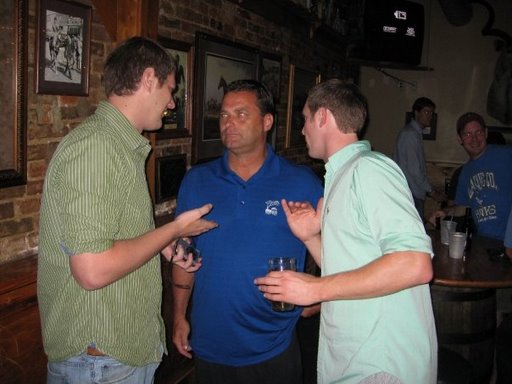
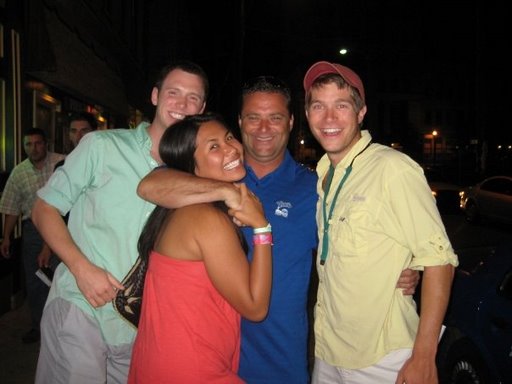
Welcome to the 2009 NBA Predraft Camp
May 26th, 2009Starting today, 52 NBA hopefuls will descend upon Chicago to go through a battery of athletic drills, medical testing and interviews in the hopes that an NBA team will see something dreamy along the way. For our purposes at RTC, the twelve players we’re primarily interested in, the early entries who are still on the fence, are listed below in red. It’ll be very interesting to see how these players perform in these tests, especially considering that unlike past years, there will be no five-on-five games where players can show their wares in a full-court setting.
In individual drills, we’d expect smooth athletes like Daye, Holiday, Mills and Teague to shine, but you never really know with these things. It’ll be interesting to listen to the reports coming out of Chi-town the rest of the week with respect to these players. According to Andy Katz (provider of the below list), this week will probably not determine the decisions of Teague, Lawal, Holiday, Mills, Gibson and Brown, but he expects Vasquez, ‘Gody, Meeks and Smith back in school soon. He also says Damion James is expected to remain in the draft, but has nothing to say about Daye. Stay tuned.
- Jeff Adrien, Connecticut
- Rodrigue Beaubois, Cholet (France)
- DeJuan Blair, Pitt
- Jon Brockman, Washington
- Derrick Brown, Xavier*
- Chase Budinger, Arizona
- Nick Calathes, Florida
- DeMarre Carroll, Missouri
- Omri Casspi, Maccabi Elite (Israel)
- Dionte Christmas, Temple
- Earl Clark, Louisville
- Darren Collison, UCLA
- Dante Cunningham, Villanova
- Stephen Curry, Davidson
- Austin Daye, Gonzaga*
- DeMar DeRozan, USC
- Toney Douglas, Florida State
- Wayne Ellington, North Carolina
- Tyreke Evans, Memphis
- Jonny Flynn, Syracuse
- Taj Gibson, USC*
- Danny Green, North Carolina
- Blake Griffin, Oklahoma
- Tyler Hansbrough, North Carolina
- Luke Harangody, Notre Dame*
- James Harden, Arizona State
- Gerald Henderson, Duke
- Josh Heytvelt, Gonzaga
- Jordan Hill, Arizona
- Jrue Holiday, UCLA*
- Joe Ingles, Melbourne South Dragons (Australia)
- Damion James, Texas*
- James Johnson, Wake Forest
- Gani Lawal, Georgia Tech*
- Ty Lawson, North Carolina
- Eric Maynor, VCU
- Jack McClinton, Miami
- Jerel McNeal, Marquette
- Jodie Meeks, Kentucky*
- Patrick Mills, Saint Mary’s*
- B.J. Mullens, Ohio State
- Jeff Pendergraph, Arizona State
- A.J. Price, Connecticut
- Tyler Smith, Tennessee*
- DaJuan Summers, Georgetown
- Jermaine Taylor, Central Florida
- Jeff Teague, Wake Forest*
- Hasheem Thabeet, Connecticut
- Marcus Thornton, LSU
- Greivis Vasquez, Maryland*
- Terrence Williams, Louisville
- Sam Young, Pitt
Laue Doesn’t Need a Hand, Thankyouverymuch…
May 26th, 2009The next time we complain about our knees throbbing after a particularly physical run over at our local courts, remind us of Kevin Laue. The 6′10 native of Pleasanton, CA, was offered a scholarship by Manhattan College after spending a postgraduate year at Fork Union Military Academy, where he averaged 10/5 per game playing against other D1 prospects. So why is anyone talking about a low-major recruit heading to a MAAC school? Well, because Laue plays with only one hand. From the AP:
Manhattan College’s Barry Rohrssen figures coaches take chances all the time. He’d rather take one on Laue, whose left arm ends just past the elbow. So last week, the Division I school signed the center, and Rohrssen is confident his work ethic will rub off on other players. “We take chances on kids who have poor academic histories, who have disciplinary problems both on the court and off the court,” Rohrssen said Tuesday. “We give opportunities to players who don’t appreciate them, who take them for granted. For all the right reasons, Kevin deserves this chance, and he should make the most of this opportunity.”
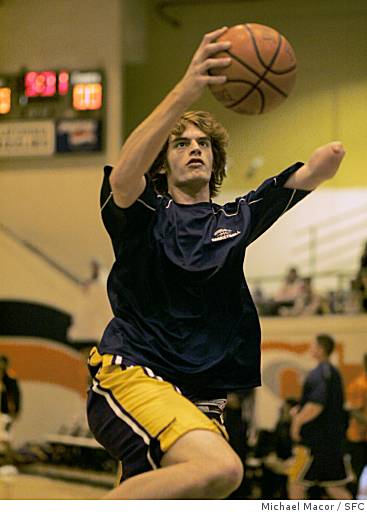
Back in grad school, we actually played pickup ball quite a bit with a guy like this. He was surprisingly efficient with the ball in terms of his motion and release. Very consistent with his shot and could play defense just as well (or better) as anyone else out there. Given that experience, it honestly doesn’t shock us that someone such as Laue could pull this off, as in our experience, people with disabilities work that much harder to prove everyone wrong. Two years ago an article in the San Francisco Chronicle stated, “he carries a 3.5 grade-point average. With an offseason’s work on a hook shot, he could become a Division II or III college prospect.” Or… a D1 scholarship player. Still exceeding expectations. Congratulations, Kevin.
05.26.09 Fast Breaks
May 26th, 2009It’s been a while since we updated things (Wall to Kentucky), so let’s get caught up this evening…
- RIP Wayman. You’ve undoubtedly heard the sad news about 44-year old Wayman Tisdale’s passing on May 15. Obviously, we never met Tisdale, but everyone agrees that he was a person who touched the lives of many through his athletic and musical career. ESPN takes a look back here, and CNNSI reflected on his legacy in the state of Oklahoma here. Jeff Goodman tells a story about Tisdale following through on a promise to a budding jouralist (him). Tisdale’s public memorial service was last Wednesday.
- Smoke, then Fire. We mentioned previously that it’s unfathomable to us that USC wouldn’t take Renardo Sidney, given their astonishing and proven ability to look the other way. Maybe they knew that Rodney Guillory’s associate, Louis Johnson, was chirping like a parrot to anyone who will listen that he witnessed Tim Floyd handing Guillory a cool grand in return for the delivery of OJ Mayo. Now Mayo’s talking to the feds about Guillory, and at least one writer thinks the whole darned ship is going up in flames. The million-dollar question is whether the NCAA investigators have the sack to do it. (our response: yes, but half-assed). Update: Noel Johnson, a 2009 signee, left the program today, leaving Dwight Lewis, and um, Lil Romeo?
- Transfers. Iowa’s Jeff Peterson (11 ppg) will transfer to Arkansas for the 2010-11 season; Indiana’s Nick Williams (9/5) will return to the South to play for Ole Miss (he was the Alabama POY in 2008); and, Clark Kellogg’s kid, Alex, will leave Providence for Ohio University (Bobcats, not Buckeyes) to play his senior season. In corollary news, Oklahoma’s Juan Pattillo was shown the door by Jeff Capel for undisclosed team violations.
- NBA Draft News. Duke’s Gerald Henderson made it official and signed with an agent, forgoing his final year in Durham. Xavier’s Derrick Brown, a borderline first-rounder, is highly unlikely to return to XU next season. Meanwhile, word last week was that Florida’s Nick Calathes signed a contract for $1.1M/year (+ a home, car and tax credits) to play in Greece (where he holds dual citizenship), and Clemson’s Terrence Oglesby is leaving school after his sophomore year to pursue a pro career in Europe (he’s also a dual citizen with Norway). Southern Miss’s Jeremy Wise will not return either. BYU’s Jonathan Tavernari decided to wise up and will return to the Cougs for his senior season, as will Arkansas leading scorer Michael Washington. FYI, now that the draft lottery is set (Clips win!), the new mocks are coming out. Here’s NBADraft.net’s Top 14.
- Obligatory Kentucky News. It’s out with the old and in with the new, as three scholarship at Kentucky are given the pink slip to make room for Calipari’s motherlode of talent. The buzz is already loud for Kentucky as the preseason #1 next year, but we’re a little surprised Jodie Meeks hasn’t made his decision yet (he’s unlikely to move up to the first round).
- Coaching News. Illinois top man Bruce Weber got a $500k raise and a three-year extension based on his stellar work in Champaign last season. Villanova’s Jay Wright talked to and then withdrew from the search for a new Philadelphia 76ers head man. Wazzu’s new man Ken Bone signed with the school for seven years and $650k per year, according to school records. Michigan’s John Beilein will chair the NCAA’s Ethics Comittee, featuring Johnny Dawkins, Jeff Capel and the omnipresent Dave Odom… does anyone else find it odd that Beilein’s charge here is to clarify the rules as written, even though he used legal loopholes to get out of his stated buyout with WVU when he left for greener pastures? Finally, here’s a rather-suspect list of the top ten coaches in America today – it omits Bill Self and John Calipari, which leads us to believe that the author did not watch the 2008 national championship game.
- Other Errata. CJ Henry is officially enrolled at Kansas and will get to play with his brother, super-wing Xavier Henry, next season in Lawrence.
- Former Tennessee guard Ramar Smith (whom Coach Bruce Pearl kicked off the team in 2008) was arrested for robbery (the holy trinity: money, guns and marijuana) last week, and he’s currently awaiting trial.
- Luke Winn gives us a glimpse at what Mississippi St. will look like next year (with John Riek and Renardo Sidney in the fold).
- Please tell us that some irate Kentucky fan with rivers of money will buy these and burn them.
- What WILL we do with those nefarious message board posters!?!?
- Campbell University will rejoin the Big South (its former home until 1994), leaving the Atlantic Sun after the 2010-11 academic year.
- The Big Sky is moving to a Friday/Saturday conference weekend model to save costs beginning next season.
- This is a sad story, but we’re glad that the authorities found this Olympic champion safe and sound.
- Well, sucks for them (next, USC?).
SLAM Reports John Wall to Kentucky
May 19th, 2009It’s an odd source for news like this to break (at an odd time, no less), but SLAM magazine reported early Tuesday morning that mega-recruit John Wall has verbally committed to play for John Calipari at Kentucky next season. A local television station in Lexington is echoing the SLAM story, but we’ve yet to find a second reliable source so we remain a little skeptical until we hear from one of the stalwarts in the industry – Goodman, Katz, et al.
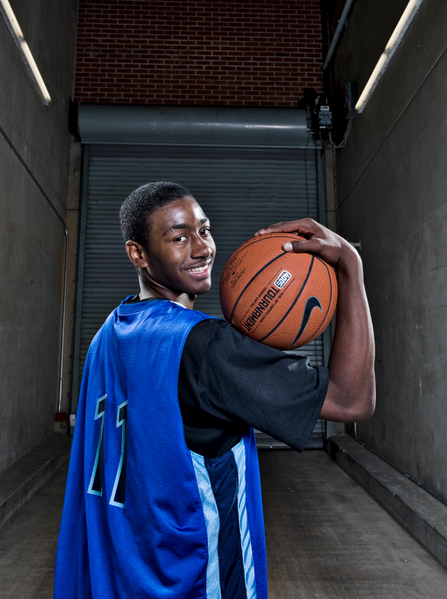
Wall Could Be the Crown Jewel in the Greatest UK Class Ever
Assuming this is true, there’s little question that John Calipari has had the greatest first six weeks of recruiting in the history of the game at any school, landing the top PG (Wall) and big man (DeMarcus Cousins) in the class of 2009, as well as another top 25 player (Eric Bledsoe). He has also managed to keep two other top 40 recruits landed by his predecessor in the fold (Daniel Orton and Jon Hood) in addition to convincing all-american Patrick Patterson to return for his junior campaign. Reports indicate that UK’s other all-american player, Jodie Meeks, is also likely to return for his senior season.
This sets up an unreal potential starting lineup of:
PG – John Wall
SG – Eric Bledsoe
SF – Jodie Meeks
PF – Patrick Patterson
C – DeMarcus Cousins
With Daniel Orton, Jon Hood, DeAndre Liggins, Darius Miller and Perry Stevenson coming off the bench.
All due respect to the teams domiciled in Lawrence, E. Lansing and Chapel Hill, but that looks like the #1 lineup to us…
Let’s see if it’s true.
The Greg Paulus World Tour Is Headed To Syracuse
May 14th, 2009After a month of speculation about where he would go, Greg Paulus has announced that he will be heading to Syracuse next year to play football. We are already discussed the situation that Paulus will be walking into next year, but before Paulus can officially put his pads back on he will have to get a NCAA waiver allowing him to play one season of football. We’re not familiar with how the NCAA handles these situations since they don’t usually play out where someone transfers to another school to play a 2nd sport, but it seems pretty likely that they will grant him an exemption since it would be really bad press if they did not grant him the waiver. We can only hope that Paulus somehow leads Syracuse to a bowl game where he plays against Duke, a perennial ACC cellar-dweller (admittedly improved in the past few years) who told the former Gatorade National High School Football Player of the Year that he could play wide receiver.
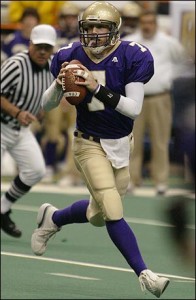
More on Gladwell’s Full-Court Pressure Argument…
May 13th, 2009We think we’ve isolated what Gladwell’s problem derives from on the fallacious full-court press argument he made last week. Put simply, he’s drinking the Rick Pitino kool-aid. We don’t blame him, Pitino is an engaging guy who can sell ice cubes to eskimos, and Gladwell wouldn’t be the first to slurp it all up (ask Karen Sypher or any Boston Celtic fan ca. 1997-98). But it appears that Pitino is his sole source of information when it comes to how underdogs win basketball games, and somehow Coach P has convinced Gladwell that much of his collegiate success is based on undertalented yet hungry players who were able to maniacally pressure Goliaths into turnovers and easy buckets. It’s almost as if Gladwell doesn’t realize that Pitino has been a Goliath for most of his career, nor does he realize that there are probably better ways of accomplishing a similar result (i.e., slowing games down to a crawl). In this week’s back-and-forth with Bill Simmons, Gladwell writes:
You’re right. I am a bit obsessed with the full-court press at the moment. I just did a story for The New Yorker about how underdogs beat favorites, which had a lot about basketball in it. For the story, I went down to Louisville and had a long chat with Rick Pitino. He argued that the press is the best chance an underdog has of being competitive with stronger teams, and I think his record proves the case. That Providence team he took to the Final Four in 1984 has to have been just about the least talented team EVER to reach that level. Then, of course, Pitino takes one of his first Louisville teams to the Final Four in 2006 and this season’s team to the Elite Eight, and no one’s going to argue that either of those teams were filled with future Hall of Famers.
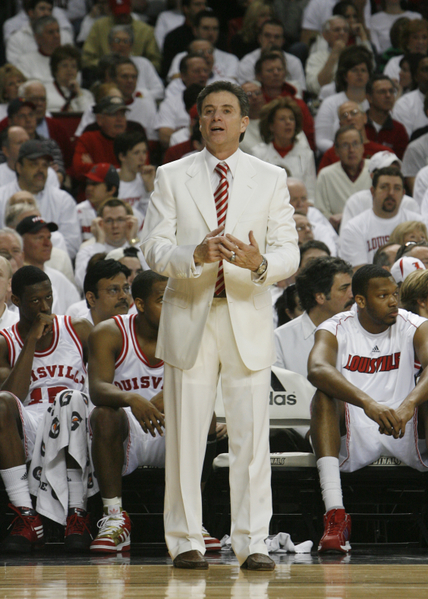
First of all, it was 1987, not 1984, when Pitino’s Providence team went to the F4, and we contend that it was Pitino’s early-adoption of the just-instituted three-point shot that gave his team a competitive advantage that season more than their use of full-court pressure defense. PC set records that still stand today at the school for taking (665) and making (280) threes (over 8 per game), led by their sharpshooting guards Delray Brooks and of course, Billy Donovan. Traditional powers from the early to mid-80s such as Georgetown and Louisville were slower to utilize the new shot, and as such, they quickly became less relevant over the next several years until they realized its value. Providence’s full-court press was important to achieving that success, but the three-point shot was decidedly more important.
Secondly, least talented team EVER to make the F4? George Mason 2006, Wisconsin 2000, LSU 1986, among others… say hello.
Finally, his record proves the case? How? Pitino is a masterful recruiter, and this is nothing new to anyone who has followed college hoops during the last twenty years. While it’s true that his BU and Providence teams weren’t particularly talented, his teams dating from 1992-97 at Kentucky and 2002-09 at Louisville were mostly loaded. We thought the argument Gladwell tried to make here is that the full-court press levels the playing field for the Davids of the world vs. the Goliaths, right? How is using Rick Pitino’s teams, the majority of which were exceptionally athletic AND talented, as your example of this? The 2005 Louisville team (Pitino’s fourth season at the school, btw) went 33-5, had an all-american wing playmaker in Francisco Garcia and a very good point guard named Taquan Dean to go along with the standard Pitino cast of numerous replaceable parts – all long, lean and athletic. That team was a #2 seed (corrected: #4 seed) in a region where the common perception was that the Cards were a better team than the #1 seeded Washington Huskies. This is supposed to be a scrappy group of underdogs? And who among our faithful readers is going to swallow the argument that the 2009 Louisville team (a #1 seed and preseason favorite along with UNC and UConn) wouldn’t have been nearly as good without their press, as Gladwell implies. What about Earl Clark? Terrence Williams? Does he not realize that these two were among the best dozen or so players in college basketball this season?
And what about this indefensible jewel regarding Louisville center (and freshman all-american) Samardo Samuels?
When we were talking, Pitino called over Samardo Samuels, who is, of course, Jamaican — his point being that this was his ideal kind of player, someone who substituted for a lack of experience with a lot of hunger. There is something weird, isn’t there — and also strangely beautiful — about a coach who deliberately seeks out players who aren’t the most talented?
Right. The same player who was the 2008 USA Today POY at the high school level and rated #9 overall in his class by Rivals isn’t the most talented. Jamal Mashburn, Tony Delk, Antoine Walker, Ron Mercer, Derek Anderson, David Padgett, Juan Palacios, Derrick Caracter, Jerry Smith and many others were also lesser-talented players whom Pitino plucked from the bottom of the barrel because of their innate hunger (not talent). (Amir Johnson, Sebastian Telfair and most recently Jeremy Tyler are additional lesser-talented players whom Pitino sought for their hunger only to be disappointed when they headed straight to the pros… because they were less talented.)
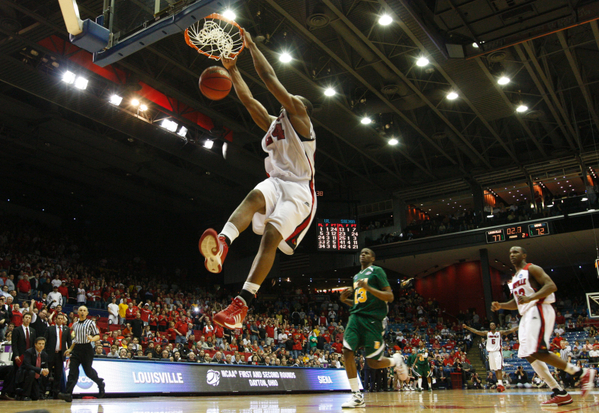
Yeah, Samuels is Undertalented
Gladwell has fallen hard for the Pitino pitch. Here’s more.
There are two other things here that fascinate me. After my piece ran in The New Yorker, one of the most common responses I got was people saying, well, the reason more people don’t use the press is that it can be beaten with a well-coached team and a good point guard. That is (A) absolutely true and (B) beside the point. The press doesn’t guarantee victory. It simply represents the underdog’s best chance of victory. It raises their odds from zero to maybe 50-50. I think, in fact, that you can argue that a pressing team is always going to have real difficulty against a truly elite team. But so what? Everyone, regardless of how they play, is going to have real difficulty against truly elite teams. It’s not a strategy for being the best. It’s a strategy for being better. I never thought Louisville — or, for that matter, Missouri — had a realistic shot at winning it all in the NCAAs this year. But if neither of those teams pressed, they wouldn’t have been there in the first place.
Let’s break this down again, because it’s clear that Gladwell does not understand why he’s wrong about this. Louisville and Missouri have elite talent and elite athletes at the college level. Their pressure defense only makes them better because they’re already really good to begin with. These two teams are not and never were underdogs in the David mold. They’re excellent college basketball teams and that statement would be true no matter what style of defense they chose to play. The elite teams that Gladwell mentions a pressing team will always have trouble against – yeah, what he’s failing to recognize is that Louisville and Mizzou are the Goliaths in that scenario.
A true David in the college game is a team that is outclassed from a talent and/or athletic perspective. Often it’s both. If a team deficient in one or both of these areas tries to press a legitimate Goliath such as a UConn, Michigan St. or Oklahoma this year, they’d have gotten crucified. A pressing team at the collegiate level must, must, must have good athletes (and enough of them) to become successful; otherwise, the elite guards populating rosters on the Goliaths will absolutely destroy it. There’s a reason that the few pressing teams that pull major upsets in the NCAA Tourney, while somewhat lacking on skill, are always full of guys who can run, jump and terrorize teams with their long arms and defensive activity. We’re thinking of Bruce Pearl’s teams at UW-Milwaukee and Mike Anderson’s UAB teams as good examples. Short on individual talent, but long on athleticism.
So what do you do if you’re a David who is short on both? Gladwell suggests that full-court pressure evens things up, and uses his junior high girls basketball example as evidence to that fact. The problem, which we covered in our previous examination of this topic, is that at the collegiate level, a team that is significantly less skillful and less athletic than its opponent will suffer extreme humiliation by employing this strategy. The proper way to combat this is to instead slow the game down, limit possessions, run an efficient offense and play hard-nosed halfcourt defense. Princeton did this to UCLA, Bucknell did this to Kansas, Vermont did this to Syracuse, and there are many, many other successful examples. Seriously, does anyone in their right minds believe that those three teams could have pulled the upsets by pressing the Goliath?
It’s preposterous, yet that’s what Gladwell would have us believe.
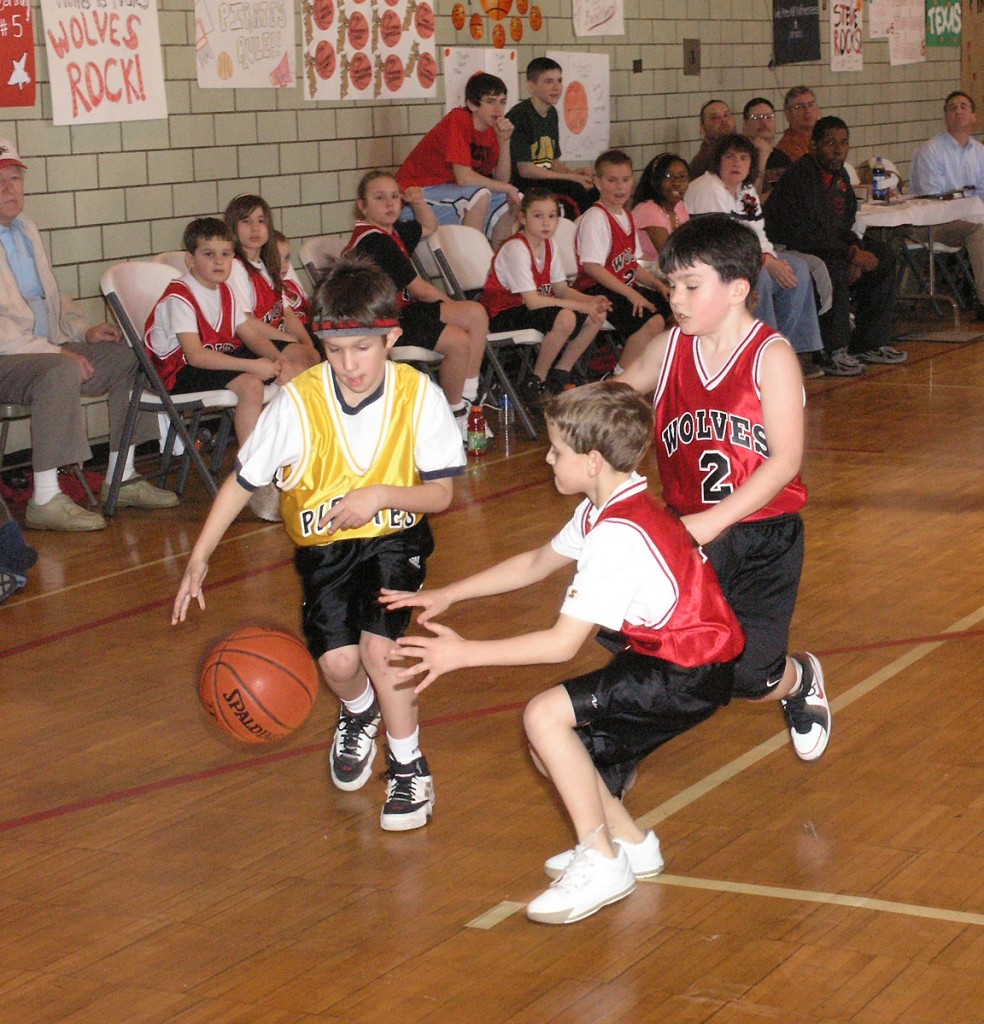
You Need Athletes to Make This Work
The bottom line is this. Successful pressing requires athletes at the elite level of college basketball. If you do not have athletes (and most Davids don’t), then you will get run ouf of the gym as Goliath scores layup after dunk after layup on your smaller, slower team. Your best strategy is instead to slow the game down and limit possessions while playing smart basketball on both ends. We see upsets like this nearly every year in the NCAA Tournament. The one caveat, however, is if you have players who can match up reasonably well with a Goliath from an athletic standpoint, then you may consider pressing as a viable strategy. The problem with this, of course, is that it’s fairly rare in the college game that a true David will have that kind of athletic stable at their disposal. If you’re lucky enough to have both talent and athletes to run a press (as Pitino has had throughout much of his career, along with Nolan Richardson and some others), then such a strategy can devastate opponents – the real question should be why more Goliaths don’t institute the full-court press, rather than Davids. This is why we continue to argue that full-court pressure defense is a better strategy for an elite team rather than an underdog – those teams already have the proper tools of talent and athleticism to employ it.
05.12.09 Fast Breaks
May 12th, 2009While there’s not a ton of things happening, what has happened the last few days has been mildy interesting…
- Everyone in the state of Kentucky wants to know what this “unspecified 2003 encounter” is all about. For what it’s worth, Rick Pitino denied any interest in the Sacto Queens job that he was rumored to have wanted over the weekend. Jeff Goodman likes this.
- Luke Winn says that John Wall, Jeff Teague and Jodie Meeks are the three players still in limbo that will impact next season. Our take is that both Wall and Meeks end up in Lexington and Teague returns to the Dash.
- Lance Stephenson – “like a supermodel with herpes.” Well done.
- Pauley Pavilion is getting a long-overdue $185M renovation that will displace the home UCLA Bruins for the 2011-12 season.
- It appears that the Toledo gamblers didn’t exactly front for a slick gaming syndicate – they probably lost money on the deal. Here’s a breakdown of each of the games they bet on with the results against the spread.
- Maybe the SEC won’t suck again next year – MSU’s Jarvis Varnado is returning to the Bulldog program for his senior season, joining super-frosh Renardo Sidney (assuming he’s eligible). The nation’s two-time defending blocks leader will have a good shot at setting the record next season – he needs 142 to do so. Kentucky’s Patrick Patterson will also return, meaning that the Cats are Jodie Meeks and possibly John Wall away from giving Kansas a run for its money as preseason #1 next season.
- Suckers only need play in Delaware, as sports betting will be legal there very soon (only parlays, though).
- Well, if you’re loaded and your ride got collard so you’re walking alongside a road in Maine of all places, why not add a sexual assault charge to the evening’s events?
- Purdue head coach Matt Painter will join Pitt’s Jamie Dixon and S. Illinois’ Chris Lowery as the trio of coaches for the Team USA Under-19 team that will play in New Zealand this summer.
- Utah’s Jim Boylen received a nice raise to $850k per year after his NCAA Tournament appearance this season.
O.J. Mayo: The Gift That Keeps On Giving
May 12th, 2009After last year’s “Outside the Line” report, we figured that we wouldn’t hear much more about O.J. Mayo’s time at USC (Reggie Bush’s parents lived in a million dollar house and the NCAA didn’t seem to care). We expected that the biggest impact we would see was the reemergence of Taj Gibson and other Trojans who mysteriously disappeared during Mayo’s time in LA.
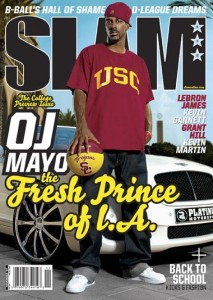
It turns out that Mayo might be leaving a more lasting impact on USC basketball than we expected as new reports indicate that Tim Floyd gave at least $1,000 to Rodney Guillory, one of Mayo’s handlers. [Ed. Note: Is Yahoo! Sports run by UCLA's journalism school? First Bush and now Mayo?] Given the fact that the NCAA is already “investigating” the Trojans’ basketball and football programs this could be a major blow to the USC athletic department. The question is whether the NCAA will bring out the whip against one of its glamour programs.
The new allegations (ok, we sort of figured this was going on) raise several others questions:
- Was Renardo Sidney (or his handlers) aware of this when he (they) made the decision to go to Mississippi State?
- How much does Tim Floyd regret turning down that Arizona payday?
- Do USC’s two 4-star recruits (Noel Johnson and Lamont Jones) have Memphis-style opt-out clauses in their LOIs? It probably wouldn’t work here, but I’m betting they are wishing they had waited this out.
Our guess is that this investigation will take at least a few years before the NCAA finally decides that they don’t have enough as information as the suits in Indianapolis are more concerned with hunting down college students using Facebook or other crimes against humanity. Actions that impact the integrity of the game? Not so important in Indianapolis. . .
On Obama, the Heels and Reggie Love’s Chin…
May 12th, 2009Yesterday in the White House South Lawn, President Obama greeted Coach Roy Williams and his Tar Heels to celebrate their recent national championship. Obama spent some time in his remarks reflecting on his pickup game in Chapel Hill last year, going so far as to suggest that luck may have carried both he and the Heels to victory in the ensuing year. (well, that, plus a catastrophic economic collapse and Ty Lawson’s DUI; so yeah, it was all luck…)
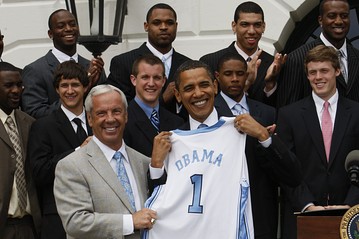
Obama is our first genuine hoops president, so it’s no surprise that he employs former Dookie and teabagger extraordinaire Reggie Love as his assistant. Everyone can use a House Dookie, after all. This was a culmination of a particularly rough few days for Love, though, as he was forced to endure the gigantic slurping of his most hated rival from his BFF, coming on the heels of a weekend pickup game where he took a substantial shot to his face during play. From Politics Daily:
After the game, Mr. Love had a bandage on his chin, according to the pool reporter at the scene. And on return to the White House, he “muttered he might need stitches.”
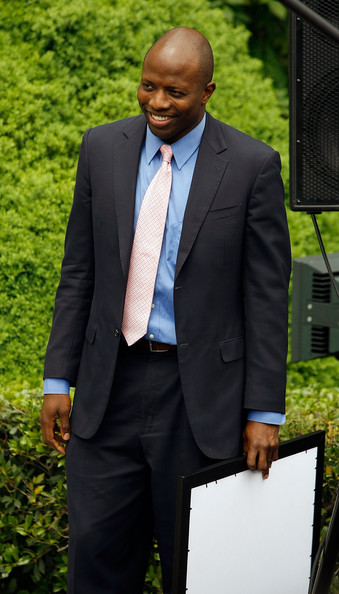
Yes, you read that correctly. Mr. Teabags took a shot to his chin, a phrase which carries all kinds of hilariously inappropriate references that we won’t use here for fear of ending up in Gitmo.
While our confidential sources did not give up the name of Team Obama’s version of Dikembe Mutombo (Chris Paul?), it’s pretty clear that the President means business on the court – his team won three of the five games against Love’s crew (RTC is still waiting for its invitation). As you can see from the above photo taken at the UNC ceremony on Monday, though, it appears that Love is just another whining Democrat Dookie who can’t handle a little rough action around the edges (unless of course it involves voluminous amounts of alcohol and someone’s scrotal region, then he’s +1).
05.07.09 Fast Breaks
May 7th, 2009As we anxiously await John Wall’s FINAL DECISION…
- Here’s your Greg Paulus update from his recent trip to Nebraska; and it appears as if the Dookie won’t be the only basketball player making the transition to the gridiron next fall, as Miami (FL)’s Jimmy Graham will join the Hurricane football team.
- Credit where it’s due. Tom Izzo will put his money where his mouth is.
- Remember the Toledo basketball and football point-shaving scandal involving our boy Sammy Villegas? The other shoe dropped on Wednesday.
- Why announce a tournament field when the field isn’t even set yet?
- Pat Forde gives his breakdown of the Renardo Sidney recruitment to Mississippi St.
- Hey, Tennessee’s most eligible bachelor Bruce Pearl got engaged! Meet Miss Brandy Miller (definitely boobalicious).
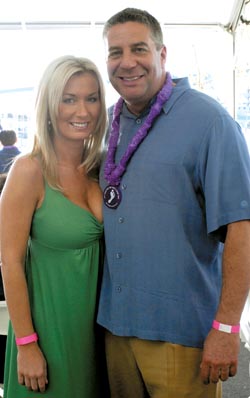
Finally, the Shane Battier Rule is Nigh…
May 6th, 2009This is the best news that we’ve seen come out of the NCAA Rules Committee in a long time. It’s not quite what we’ve been requesting for lo the last decade (an NBA-style block/charge semicircle under the basket), but it’s a good start. NOTHING in college basketball makes us more irate than watching an excellent move and finish get taken away because some douchebag stepped over at the last second and camped out directly under the rim (ok, maybe Mike Patrick, but nothing else). If the NCAA Rules Oversight Panel approves this measure on June 3, and it should, we’ll no longer have to deal with this bastardization of the rules. Here’s the story on what will definitely be known as the Shane Battier Rule, from the AP:
The recommendation on play under the basket won’t call for a restricted-area arc painted in the lane as the NBA has, but it prohibits a secondary defender from establishing position in the area from the front of the rim to the front of the backboard. A defender must establish position outside that area to draw a charge or player-control foul. “In our surveys and rules forums, the coaches wanted the committee to address the increasing contact that seems to occur under the basket,” NCAA Secretary-Rules Editor for Men’s Basketball Ed Bilik said. “Instead of an experimental rule, this clarifies how officials are to call this play throughout the season.”
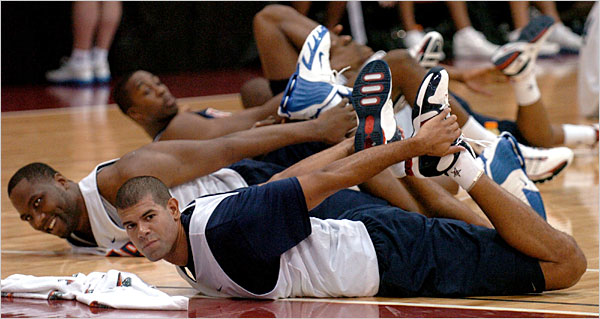
Shane is Used to Being on the Floor
If this rule is actually implemented next season and called as currently contemplated, we figure it’s worth at least three buckets for opposing teams in Cameron. Not. Insignificant.
Gladwell’s Theory on Full Court Pressure is the Only Outlier Here
May 5th, 2009Everyone’s favorite contrarian and make-sense-of-the-world guru, Malcolm Gladwell, wrote a provocative piece in this week’s New Yorker that is making the rounds among the hoops blognoscenti today. Gladwell, the author of such fantastic thinking-man’s books such as The Tipping Point, Blink and Outliers, is one of our favorite writers, one of the few in the industry for whom we’ll actually make a specific trek to the book store and pay for a hardcover (!) edition shortly after his new material arrives. So when we say we’re a major fan of his writing, thinking and (ahem) moral clarity, we’re not joking. In RTC’s view of the world, Gladwell is Blake Griffin and the rest of us are merely the rim (or a hapless Michigan defender, take your pick).
Well, except for today.
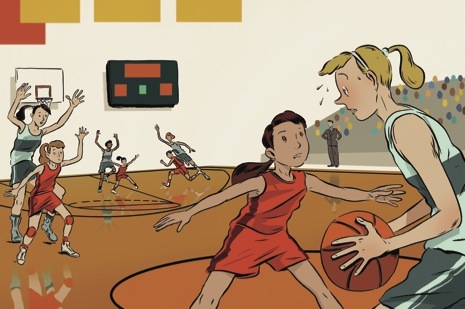
Gladwell’s Argument
The article is long, but Gladwell’s thesis focuses on a story about a girls’ junior league basketball team located in Silicon Valley, filled with 12-yr olds who admittedly weren’t very good at the skillful parts of the game, but they could run and hustle and were able to win their local league and make the national tournament based upon their reliance and perfection of a strategy that any team can employ: the use of full-court pressure defense. In his argument, Gladwell successfully interweaves the biblical story of David vs. Goliath with quantitative analyses of historical military strategy and modern basketball, ultimately concluding that the Davids in every facet of competition have a much better chance of winning by simply changing up how the game is played.
Using his typical mixture of anecdotal and statistical evidence, Gladwell argues that for a David to have a chance at beating Goliath, he must do two things. The first thing – outwork Goliath – is a simple enough concept; but, more importantly, the second requirement is that David must also be willing to do something that is “socially horrifying” in order to change the conventions of the battle. For example, David knew he couldn’t defeat Goliath in a traditional swordfight; so he reconsidered his options and decided instead to pick up and throw the five stones by which his opponent fell. Gladwell likens this strategy to the one implemented by the girls’ team’s coach, Vivek Ranadive, an Indian-born immigrant who had never before played the game of basketball. Noting that his team wasn’t skilled enough to compete in the traditional half-court style of basketball played by most teams at that level, he instituted a full court pressure defense that truly confounded their opponents. Using Gladwell’s model, the press was a socially horrifying construct that allowed Ranadive’s team a chance to compete with their more pysically talented contemporaries. And compete they did, all the way to the national tournament.
Given the purported equalizing effect of the press, Gladwell asked why isn’t the use of full-court pressure defense more commonly used in organized basketball? He cites Rick Pitino as one of the most successful adopters of the strategy, particularly with his 80s Providence and 90s Kentucky teams, but other than a few coaches here and there over the years, in his estimation the strategy remains largely underutilized (Mizzou’s Mike Anderson and Oklahoma St.’s Travis Ford, a Pitino protege, say “hi”).
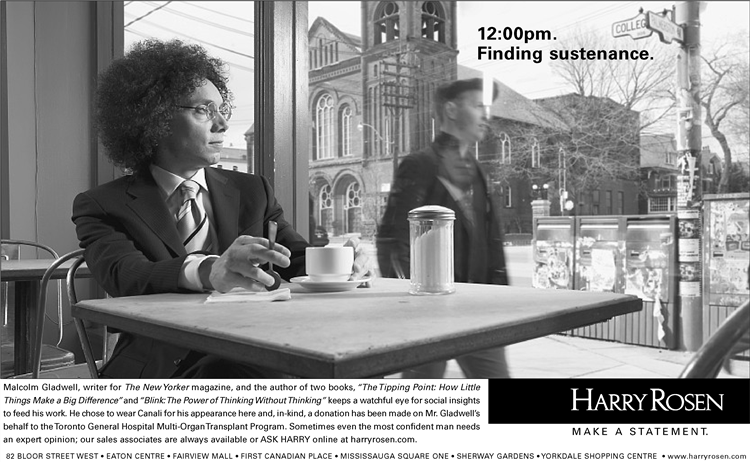
Why It’s Wrong
We’re somewhat concerned about a lightning bolt striking us when we say this, but Gladwell completely misses the mark on this one – the full court press as a strategy works great when you’re dealing with 12-yr old girls whose teams are generally all at roughly the same skill and confidence levels (i.e., not very good), but as you climb the ladder and start to see the filtration of elite talent develop in the high schools, it actually becomes a weapon that favors the really good teams, the Goliaths, more than that of the underdogs. The reason for this disparity is simple – successful pressure defense is a function of phenomenal athleticism (quickness, activity and agility) more than any other single factor, and the best teams tend to have the best athletes (not always, but often). That’s why the early 90s leviathans of UNLV, Arkansas and Kentucky were so unbelievably devastating – they each could send wave after wave of long, athletic players at their opponents, which were usually slower, less athletic and shallower teams.
Gladwell confirms this when he talks with Pitino at length about the 1996 Kentucky dismantling of LSU, when the Wildcats went into the locker room with an 86-42 lead as an example of the devastating consequences of a great full-court press. No argument there, but where it breaks down is when he fails to recognize that 1996 UK team was one of the best and deepest teams in the last quarter century of college basketball. Nine players saw time in the NBA from a team who steamrolled most everyone they came into contact with that season. The LSU first half was Exhibit A of the destruction, but they were far from the only one, and for Gladwell to use this example to somehow make a case for full-court pressure defense assisting the Davids pull off an upset is borderline absurd!
The other factor that Gladwell doesn’t discuss in his piece is that teams at the highest levels of basketball usually have guards who can beat pressure by themselves (not typically found at the 12-yr old level). There’s a very good reason that you almost never see a full-court press in the NBA, and it’s because point guards like Chris Paul and Rajon Rondo are nearly impossible to trap in the full-court. Every NBA team has at least one player who can easily negotiate any backcourt trap, which will lead to an automatic fast break advantage and two points at the other end – a coach of an underdog employing this strategy on a consistent basis will soon be in the unemployment line if he tries this too often. This is obviously less true at the collegiate level, but there are enough good guards at the top programs that similarly make full-court pressure a relatively futile effort. Are you seriously going to trap Ty Lawson or Sherron Collins for an entire game? Good luck with that strategy.
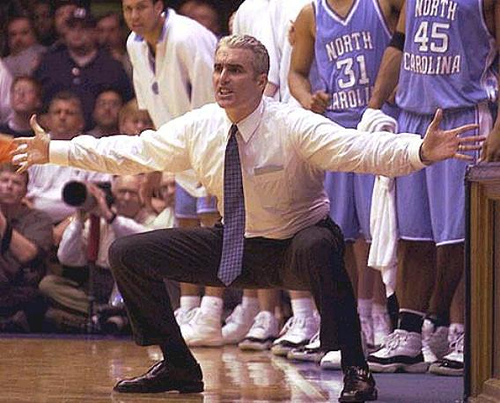
Conclusion
What’s particularly ironic about Gladwell’s conclusion that full-court pressure defense could act as the great equalizer in basketball is that a byproduct of this strategy is that it speeds up the game. Yet, the tried-and-true method for less talented teams to have a shot to beat their more talented counterparts is to slow the game down. Taking the air out of the ball became such a problem in the late 70s and early 80s that the NCAA instituted the shot clock to eliminate 24-11 abominations like this one. Even former UNC coach Matt Doherty employed a modern shot-clock version of the strategy in a 60-48 loss against #1 Duke in the 2002 ACC Tournament. We’d never say never about Doherty’s coaching acumen, but we would be seriously shocked if he had considered pressing Duke (and Jason Williams) as a viable strategy to pull off the major upset. It is Doherty, though, so you never know.
Gladwell, as always, wrote a thought-provoking article that told a fascinating story about Vivek Ranadive’s team of twelve-year old “blonde girls.” He failed, however, when he made a logical leap from youth league girls’ basketball to the elite levels on the assumption that such a strategy would work similarly for lesser talented teams. It’s a fair assumption that was likely made by someone not as familiar with the intricacies of high-level basketball, but our job here of course is to set the record straight. If we ever end up coaching youth league basketball, though, it’s now clear what our first practice will focus on.
















0 comments:
Post a Comment